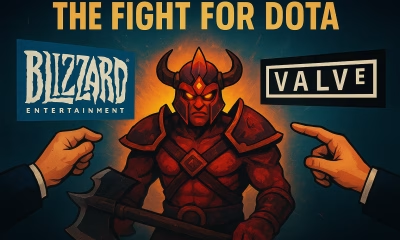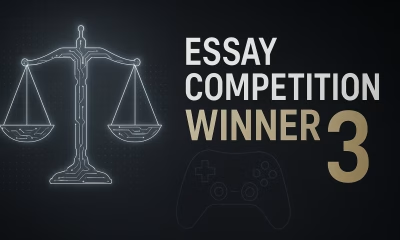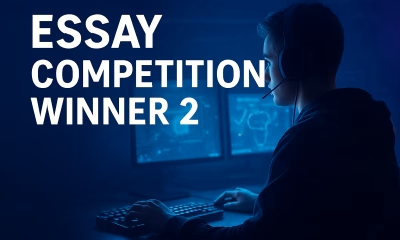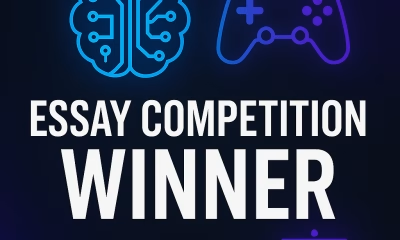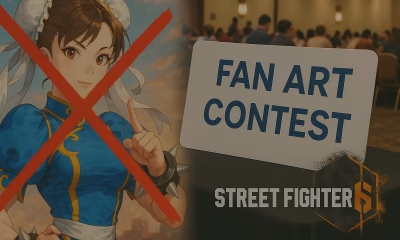IP
Esports and the Control of Intellectual Property
This article analyses the ecosystem of electronic sports (esports) as an emerging
and innovative industry in Argentina, and identifies the potential areas of conflict that
may arise in the governance of this activity from the perspective of Intellectual
Property Law, particularly regarding Copyright, Trademark Law, and Image Rights.

Table of Contents
Introduction into Esports[1]
[1] “Original article published in Spanish in the Intellectual Property Supplement 4.0, August 2023, pp. 15-19, Online citation: TR LALEY AR/DOC/1750/2023, by Thomson Reuters – La Ley Argentina”
At present, it is no longer necessary to define esports, given the existence of academic consensus that refers to them as professional (and, in some cases, amateur) competitions conducted among users of video games.
Their origin dates back more than two decades; however, the “boom” of this industry in Latin America, and in Argentina in particular, is linked to at least two particularly relevant events:
The award obtained by the 13-year-old player Thiago “K1nGod” Lapp at the Fortnite World Cup in 2018, which brought this niche market into the spotlight, including among major telecommunications media.
The emergence of the COVID-19 pandemic, which forced a hiatus on countless activities, except for video game competitions, and even prompted the virtual adaptation of some traditional sports.
Despite the path already travelled, and as usually occurs with innovative industries, legal regulation lags behind actual practice. In Argentina, notwithstanding the development of the scene, there is currently no specific regulation governing this activity.
The absence of legal frameworks compels the actors involved to seek legal certainty in their interactions through private agreements (a kind of self-regulation), resorting subsidiarily to the general norms already in force within the Argentine legal system.
Carrillo Vera (2016) highlights:
“The treatment granted to the broadcasting of electronic sports, as well as to the commercial and economic activities derived therefrom (player equipment, uniforms, sponsors, etc.), resembles the concept of spectacle that envelops traditional sports, orchestrated for the viewer’s enjoyment and, of course, pursuing economic profitability” (p. 3).
Similarly, García Sellart (2020) notes that:
“The esports and video game industry shares the dynamics of the entertainment, marketing, advertising, sports, and technology industries, along with their respective regulatory environments, thus amplifying and complexifying this sector with its own unique characteristics and components.”
Both the spectacle-oriented nature of esports and their interaction with other industries necessitate an interdisciplinary legal approach, particularly under the umbrella of Entertainment Law, in order to protect the various legal interests involved, such as copyright, image rights, trademarks, and even patents.
Esports and Sports Under the Scope of Intellectual Property
The etymological construction of the term esports (electronic sports) inevitably implies the categorization of the activity as a sporting practice.
As Roel (2018) points out:
“The concept of Electronic Sport falls within a new definition of Sport that follows, to some extent, the lines proposed by Parlebas (1988) and Tiedemann (2004), and can be defined as a cultural field of activity wherein individuals engage and seek to enhance their skills by competing in specific areas, under the premise that such activity must involve rules, a ludic character, and institutionalization.” (p. 36)
From this definition, several key elements emerge that are shared by both traditional sports and esports: The expression “cultural field of activity” avoids entering into the sterile debate over the necessity of physical effort and/or intellectual engagement to classify an activity as a sport.
The phrase “engage in competition” highlights the foundational principle in both sports and esports: a skills-based contest governed by a regulatory framework that determines the conditions for victory and defeat.
The “ludic character” requires no further elaboration.
Lastly, the “normativization and institutionalization” denotes an organizational process aimed at formalizing the practice of the activity. In the case of esports, a significant difference lies in the existence of a dual rule system: an internal set of rules embedded in the source code of the video game itself, and an external set crafted by the tournament organizers.
Notwithstanding the above, and despite the many parallels that may exist between both activities, the classification of esports as “sport” remains unsettled. However, the legal constructs underlying both domains share, in principle, a commonality in terms of their susceptibility to protection under Intellectual Property regimes. In this regard, the World Intellectual Property Organization (WIPO) highlights the following:
“Patents promote technological progress, leading to improvements in equipment, materials, and innovations related to sport,” a statement equally applicable to esports (e.g., patented ergonomic console controllers or systems for vote-based player ejections).
“Trademarks and designs give identity to sporting events, teams, players, and apparel,” a structure fully replicable within the esports competitive scene.
“By acquiring and strategically leveraging intellectual property rights, sports organizations and other rights holders can protect and enhance their revenue-generating potential.” Unlike traditional sports, which often promote values such as amateurism or fair play, esports are inherently structured around a commercial objective.
Structure of the Esports Ecosystem
Esports comprise a vast ecosystem that combines video game consumption from two distinct perspectives: as protagonists (players) and as spectators (viewers). The term ecosystem refers to the interdependent relationships among stakeholders within the esports industry.
Among the relevant stakeholders, the following actors may be identified:
a) Developers and publishers are companies responsible for the creation, promotion, commercialization, and enforcement of all rights arising from the exploitation of a video game (Barbará, 2019). As such, they are the holders of the intellectual property rights over the video game, the raw material upon which the entire industry is built. Notable examples include:
Riot Games Inc., publisher of League of Legends (LoL) and Valorant; Valve Corporation, publisher of Defense of the Ancients 2 (Dota 2) and Counter-Strike; Activision Blizzard, publisher of Heroes of the Storm (HotS) and Overwatch, among others.
b) Tournaments and/or leagues form the core of the industry and may be managed directly by the publisher or by third-party commercial entities whose corporate purpose is the organization of esports events. These entities typically enter into license agreements with the publishers, under which they stipulate not only the permitted use of the game in such events, but also parameters regarding public performance, direction, commercialization, and advertising.
Moreover, tournament and/or league organizers enter into a series of agreements with participants (players and/or teams) concerning the use of commercial trademarks and players’ images. Examples include: Electronic Sports League (ESL), Liga de Videojuegos Profesional (LVP), and Argentina’s own FiRe League.
c) Professional teams and players constitute a fundamental pillar of the esports ecosystem. Through the demonstration of their skills, strategic gameplay, and competitive spirit in tournaments and/or leagues, they generate the engagement that drives fan interest and, by extension, industry consumption. Participation in such tournaments and/or leagues is conditional upon entering into agreements that establish the rights granted by both players and teams to the organizers, including the commercial exploitation of team trademarks and player images.
d) Platforms or broadcasters represent another cornerstone of the industry, as they facilitate public broadcast and streaming. This involves the convergence of various rights: broadcasting rights; the licensed use of the game (granted by the publisher); the trademarks (granted by teams and/or tournament organizers); and the image rights (granted by the players). Examples of such platforms include: Twitch, YouTube Gaming, Nimo TV, Booyah, among others.
e) Commercial brands, which provide essential financial support to the activity (as sponsorships currently constitute the largest revenue source in the esports industry), aim to position their products or services through exposure in tournaments, leagues, teams, and individual players. To this end, they execute various sponsorship agreements that typically include trademark licensing clauses.
Intellectual Property Control and Potential Areas of Conflict within Esports
From the perspective of Intellectual Property Law, esports give rise to a vast number of legal issues that cannot be overlooked. Among the main areas of conflict, the following key questions emerge:
To what extent does ownership of the Intellectual Property rights over a video game grant the publisher control over its use as an electronic sport?
- What legal powers does the publisher retain when licensing the game to a third party that intends to organize a competitive event?
- Do casters, players, or teams hold any Intellectual Property rights over their contributions?
- Are the actions or plays performed by professional players subject to copyright protection?
- What role does trademark law play in this context?
It is worth recalling that Argentine Law No. 11.723 was enacted in 1933, at a time when computers, mobile phones, and video game consoles did not exist. It was not until 1998, 65 years later, that an amendment to the law formally recognized “source and object computer programs” as protected works (Article 1).
Interestingly, the earliest esports competitions, such as QuakeCon (1996) and Red Annihilation at E3 (1997)—emerged contemporaneously with this amendment.
Attempting to apply an obsolete legal framework to an exponentially dynamic industry compels us to seek solutions in more sophisticated or, at least, more experienced regulatory systems.
The Publisher and Video Game Protection under Copyright Law
The Argentine Intellectual Property Legal Regime (Law No. 11.723) classifies the video game as a “scientific, literary, and artistic work,” protected under the category of source and object computer programs (Article 1). Accordingly, the holder of rights (the publisher, in this case) is entitled to exercise a wide range of powers, including: publishing, performing, publicly displaying, alienating, translating, adapting, authorizing translation, and reproducing the work in any form (Article 2). For the purposes of commercial exploitation, the regime contemplates the execution of license agreements for its use or reproduction (Article 55 bis).
WIPO characterizes video games as complex works of authorship that comprise multiple art forms, such as music, scripts, plotlines, cinematics, artwork, and characters, all of which may be subject to copyright protection provided they exhibit sufficient originality and creativity. These works also involve human interaction, carried out via a software program running on specific hardware (Paoli, 2019).
In this regard, video games consist of:
- Audiovisual elements (e.g., images, video footage, and sounds); and
- The software program (code), which technically manages those audiovisual elements and enables user interaction with the game environment.
It should be emphasized that a publisher’s primary value proposition lies in the sale of its games—or, under the new entertainment paradigm, in the monetization of in-game content. From this perspective, the organization of competitions around the game (i.e., esports) constitutes a secondary value proposition.
Notably, the esports phenomenon was originally driven by player communities, a factor that publishers must not overlook if they wish to both maximize profits and safeguard their intellectual assets. Accordingly, publishers adopt two distinct layers of control over the use of their proprietary products:
Toward the end user (i.e., the individual who will use the game for entertainment purposes), the publisher requires acceptance of an End User License Agreement (EULA), which sets out the terms and conditions governing use of the video game.
Typically, such EULAs prohibit “reproduction in any form” and “public performance” as defined under Article 2 of Law 11.723. They may also restrict the creation of derivative works and/or prohibit streaming of gameplay.
Toward entities intending to organize events and competitions using the video game, the publisher sets forth specific parameters that must be observed to authorize the commercial use, public reproduction, and display of the game. These licensing conditions are often published on official game websites under terms such as tournament guidelines or community guidelines.
Depending on how much control the publisher retains over competitive events, Barbará (2018) identifies three licensing models for competition management:
- Open Exploitation Model: The publisher refrains from directly exploiting the game and delegates competition management, promotion, and development to third parties—typically through license agreements that permit broad dissemination and event organization, thereby enabling greater reach without relinquishing contractual oversight (e.g., Valve Corporation with Counter-Strike and the ESL).
- Closed Exploitation Model: The publisher assumes full control over the logistics of its competition structure, typically via an internal division within its corporate framework. This model often mirrors the franchise systems employed in traditional sports (e.g., Activision Blizzard with Overwatch League).
- Hybrid Exploitation Model: The publisher retains control over certain aspects of the competitive scene while outsourcing others to third parties (e.g., Riot Games, which manages regional competition for League of Legends, while national leagues are handled by third parties).
These licensing schemes represent a strategic intellectual property protection mechanism, allowing publishers to prevent infringement or unauthorized use of their works—whether concerning the software code or audiovisual elements. Legally, such agreements may be considered contracts of adhesion, given their unilateral drafting and the imbalance of negotiating power between the parties.
The implications of such centralized control over video games significantly affect the remaining actors within the esports ecosystem, often leading to ambiguous, abusive, or even detrimental situations. Accordingly, publishers theoretically possess the discretionary power to suppress the use of their games in esports. However, given the exponential growth of the competitive scene, restricting the commercial use of video games in esports would ultimately run counter to publishers’ own interests, hindering both monetization opportunities and community-driven player engagement.
Esports Matches as Works Protected by Copyright
Given that the video game itself qualifies as a work protected under copyright, as established in the previous section, every instance in which the game is played or reproduced (e.g., through streaming or during competitive events) may potentially constitute the creation of a derivative work.
To be eligible for copyright protection, a derivative work must meet at least three conditions:
Prior authorization from the original author, which in the case of esports competitions is typically addressed through the licenses granted by the publisher, as outlined in section 4.1.
As Burk (2013) points out, publishers are well aware that professional players may be using their games as platforms for competition. In such cases, while legal relationships with amateur users are generally governed by EULAs, competition licenses granted to leagues and tournaments could also serve as a basis for the generation of derivative works.
The work must be the result of personal effort by the author and demonstrate a degree of creativity. Additional perspectives for analysis arise from:
Case law concerning traditional sports, which may offer analogical insights; and
Case law specifically addressing video games.
Despite the relevance of these perspectives, Argentine jurisprudence on the matter remains underdeveloped. Thus, it is advisable to reference comparative legal experiences from European and U.S. courts.
Esports Matches from a Sports Law Perspective
As previously noted, the etymological composition of the term esports (electronic sports) naturally invites analysis through the lens of traditional sports, which may help to clarify the legal nature of esports matches.
European Case Law
European case law begins with Infopaq International (C-5/08), in which the Court of Justice of the European Union (CJEU) interpreted Article 2 of Directive 2001/29/EC. The Court held that copyright “applies only to works that are original intellectual creations attributable to their author” (para. 37), adding that the directive aims “to ensure a high level of protection for authors, enabling them to receive appropriate remuneration for the use of their works—including reproduction—so that they may continue their creative and artistic endeavors” (para. 40).
Subsequently, in Football Association Premier League Ltd and Others v QC Leisure and Others (C-403/08), the CJEU addressed the unauthorized commercial use in the UK of satellite decoders intended for other geographic zones. The Court concluded that: “The FAPL cannot claim copyright over Premier League matches themselves, as these cannot be classified as ‘works’” (para. 96), and citing Infopaq, reaffirmed that “a work must be original in the sense that it is the author’s own intellectual creation” (para. 97).
The Court emphasized that:
“Sports events cannot be regarded as intellectual creations qualifying as works within the meaning of the Copyright Directive. This applies particularly to football matches, which are subject to rules that leave no room for creative freedom in the copyright sense” (para. 98).
Nevertheless, the Court acknowledged that:
“Sports events are unique and, in that sense, original, which may render them worthy of protection similar to that granted to works—subject to national legal provisions.”
This latter statement seems to suggest that the Court did not wish to adopt a rigid stance on the non-qualification of sports events as protected works. It follows that in disciplines where the rule structure allows for creative input (e.g., figure skating, artistic gymnastics, synchronized swimming), there may be grounds for copyright protection.
U.S. Case Law
In line with European jurisprudence, U.S. courts have reached similar conclusions. In NBA v. Motorola (105 F.3d 841, 2d Cir. 1997), the National Basketball Association (NBA) alleged that Motorola’s pager device (“SportsTrax”) had unlawfully used real-time data from basketball games.
The court held that:
While the live broadcast of a sports event may qualify for copyright protection, the sporting event itself does not.
Specifically, it ruled that basketball games do not constitute original works of authorship under Section 102(a) of the U.S. Copyright Act. The court emphasized that Section 102(a) covers eight specific categories of copyrightable works, none of which include athletic events, and that such events are not analogous to any of the listed categories. Furthermore, it noted that:
“Athletic events are unscripted and aim to achieve victory rather than artistic expression.”
Esports Matches from a Video Game Law Perspective
To borrow from a play on words, in U.S. jurisprudence, the direction of copyright in video games has been largely guided by the landmark case of Midway Manufacturing Co. v. Artic International Inc. (704 F.2d 1009, 7th Cir. 1983).
In that case, Midway Manufacturing Company—the creator of Pac-Man and Galaxian—claimed that Artic International Inc. had infringed its intellectual property rights by modifying the hardware in a way that sped up gameplay and altered sound outputs, as well as by creating an identical game under the name “Puckman” (paras. 11–12).
The court addressed two central questions:
Is the video game protected by copyright?
The court reasoned that, unlike films or television—which follow a fixed sequence—video games present a different series of images each time they are played. This variability supports their classification as audiovisual works under the broad interpretation of Section 101 of the 1976 U.S. Copyright Act (para. 16).
Can players, by playing the game, create a new copyrightable work?
To analyze this, the court compared playing a video game to constructing sentences from words in a dictionary or painting using colors from a palette (para. 17). It ultimately found that playing a video game is more akin to switching television channels than to writing a novel or painting a canvas. Given the static nature of the map, camera perspective, and game options, the court held that players merely execute a limited set of predefined actions, which precludes the level of originality required under the Copyright Act to constitute a new work (para. 18).
Six years later, in Red Baron-Franklin Park, Inc. v. Taito Corp. (883 F.2d 275, 4th Cir. 1989), the U.S. Court of Appeals for the Fourth Circuit held that playing an arcade video game constitutes a public performance under Section 101 of the Copyright Act.
The case centered on whether Red Baron, an arcade operator, infringed Taito Corp.’s copyright by operating the game Double Dragon without a public performance license. At first instance, the court applied the first sale doctrine, reasoning that once Red Baron lawfully purchased the game, Taito’s copyright was exhausted.
However, the appellate court reversed that decision, clarifying that the first sale doctrine only extinguishes the right of distribution, not the right of public performance. Because Red Baron had not obtained a license to publicly perform the game, the court found it had violated Taito’s copyright.
Analytical Parameters for Determining Whether Esports Matches Constitute Copyrightable Works under Argentine Law
From the previously outlined scenarios, at least three key analytical criteria emerge for assessing whether esports matches may qualify as works protected by copyright under Argentine law:
Legal Recognition Within Domestic Legislation
Based on a superficial analysis and following the reasoning adopted in NBA v. Motorola, esports matches would not initially appear to fall within the scope of protection set forth in either Article 1 of Argentine Law No. 11.723 or Article 2(1) of the Berne Convention. Copyright protection would, in principle, only extend to the video game itself.
Palazzi (2014) observes that “the antiquated nature of Argentine intellectual property laws is problematic for addressing the challenges posed by technology”—a critique that applies equally to the case of esports. Nevertheless, Lipszyc (2019) argues that Article 1 of Law No. 11.723 is drafted in sufficiently generic and non-exhaustive terms, allowing for the inclusion of any intellectual creation that is both original and novel. Furthermore, he asserts that copyright law is only concerned with determining whether a work qualifies for legal protection, not with categorizing works into rigid taxonomies. This interpretation undermines the reasoning in NBA v. Motorola, which relied on the absence of explicit categorization in statutory language to deny protection.
Public Performance
Video games specifically designed for esports are inherently structured for public display and broadcast.
As a baseline, many video games feature a “spectator mode,” allowing users to observe matches in progress. However, such access is generally limited to those with server permissions and does not amount to a public performance under intellectual property law.
A public performance—and thus a potential subject of copyright protection—occurs when a match is broadcast beyond the internal limits of the game server, such as via digital streaming platforms that facilitate its mass dissemination.
Required Originality of the Event to Meet Statutory Thresholds
Argentine case law consistently emphasizes that although Law No. 11.723 does not define originality, the notion presumes a product of human intellect bearing traits of originality and significance. In this regard, courts have stated that a protected work must represent a personal, novel, and original expression of the author’s intelligence—an “integral creation” with individual character and meaning (e.g., CNCom, Sala A, 30/11/1995, Kamiñetzky v. AGEA; CNCom, Sala A, 25/10/2007, Creta v. Galería de Arte de Santi).
The Argentine Supreme Court has likewise held that:
“Not every intellectual creation is protected by law, but only those that constitute a personal, original, and novel expression of intelligence. The law does not protect everything that is written or composed, but only that which possesses originality.” (CSJN, 18/09/1968, Nobile v. Provincia de Santa Fe).
In the realm of esports, the originality requirement splits into two distinct analyses:
The Match as Such
Matches, composed of teams and players operating under predefined rules—both internally (via source code) and externally (via competition regulations)—do not generally offer a field of creative autonomy sufficient to justify copyright protection. As held in Midway Manufacturing, players are restricted to a finite set of predefined sequences, limiting the scope for creative expression.
Burk (2013), in alignment with the Argentine Supreme Court, argues that:
“Originality thus becomes something that stands outside the causal order of the universe; expression is only original if it proceeds from the unrestricted will of the author. That which is dictated by external influence, by definition, lacks originality.” (p. 1556)
The Broadcast or Streaming of the Esports Match
The live broadcast of an esports match—featuring real-time game footage, match commentary, camera switches, replays, and analysis—can be considered an adaptation under Article 25 of Law No. 11.723. The originality of the broadcast depends on the degree to which it constitutes a new audiovisual work. Nevertheless, this new work would still require express authorization from the publisher to avoid infringing the underlying copyright of the video game itself.
Trademark Law in Esports
According to Lipszyc (2016), a trademark is a distinctive sign designed to differentiate products and services made available to the public, and to identify the individual or legal entity responsible for their provision. Robertson (2021) highlights several benefits that trademark protection offers within the esports industry:
a) It enables rights holders to enter into license agreements with third parties for the commercial exploitation of their trademarks and facilitates product distribution without incurring liability. Licensing clauses of this nature are commonly found in agreements between teams and leagues.
b) Registered gamertags (usernames used in video game servers) may become negotiable assets with commercial value. Unlike traditional sports, where fans typically identify with teams, in esports, fan engagement is often driven by individual players—based on their skill, charisma, or personal brand—rather than by team loyalty. For instance, the Argentine team Naguará Team has approximately 800,000 Instagram followers, whereas its founder and main content creator TheDonato has over 5 million Instagram followers and 25.7 million YouTube subscribers.
c) Trademark registration also assists in monitoring and enforcing legitimacy on social media platforms and public profiles.
For example, Twitter’s verification policies have historically granted verified status (blue checkmark) automatically to professional players listed on official team websites—without requiring individual application.In the early stages of the Argentine esports scene, trademark registration was primarily driven by professional legal advice, with the aim of monetizing the brand and preventing unauthorized use.
However, following the arrival of the Liga de Videojuegos Profesional (LVP) in 2018, the formal requirements for league participation became more sophisticated. Among these, applicant teams were required to submit brand strategy dossiers as part of their application to join the LVP.
In turn, license agreements signed between the LVP and participating teams (a practice later adopted by other organizers such as FiRe League) began to incorporate disciplinary clauses linked to the performance and conduct of teams:
Initially, teams were required to warrant that they held all intellectual and industrial property rights related to their branding.
Subsequently, agreements imposed restrictions on commercial associations outside the terms of the license, particularly with sponsors whose products or services directly competed with those of the league.
For example, the standard LVP license contract includes provisions that prohibit teams from entering sponsorship agreements with companies that are direct competitors of the league’s main sponsors.
Image Rights of Professional Esports Players
The commercial exploitation of image rights is a well-established practice in traditional sports; however, in the context of esports, it remains a largely unregulated and unexplored legal territory.
Burk (2013) notes that, whereas physical athletes can be identified through a variety of distinctive elements—such as their name, jersey number, physical features, or even specific slogans—in esports, it remains to be determined which elements of a player’s identity may be considered sufficiently distinctive to warrant legal protection and enable commercial exploitation.
To this end, Burk proposes a distinction between physical traits and virtual traits—the latter being attributes that players develop within the game environment. The possibility of enforcing image rights will depend on the extent to which a video game allows for avatar personalization and unique player identification.
In the same vein, Pozzo (2021) supports a broad criterion for personality rights, one that encompasses any identifiable and unique element attributable to an individual.
In current practice within the Argentine esports industry, player-team contracts typically include a generic image use license granted by the player to the team. This license usually represents one of the main contractual considerations alongside the player’s in-game performance. However, such licenses are often limited to the player’s physical likeness, disregarding the distinctive in-game persona or virtual representation proposed by Burk.
With the advent of metaverse platforms and blockchain technologies, new forms of image exploitation have emerged within the esports industry. These developments demand a reassessment of contractual frameworks to ensure comprehensive protection of the player’s image as an intangible asset and, more importantly, as a personal and non-transferable right.
Conclusion
Innovative industries demand dynamic regulatory responses. Esports, as a socio-technological phenomenon, are seeking such responses within a legal framework that was already outdated by the time they emerged.
The tools and legal constructs provided by the Intellectual Property regime, as discussed throughout this paper, often require supplementary support from comparative legal experiences in order to offer coherent and contextually appropriate solutions to potential conflicts.
The complexity and rapid evolution of the esports industryparticularly its hybrid character combining elements of entertainment, sport, technology, and marketing, challenge the conventional boundaries of intellectual property law. In this context, a multidisciplinary legal approach becomes imperative.
As a result, the protection of rights such as copyright, trademark, and image rights in esports must be interpreted and applied with flexibility and foresight, ensuring that regulatory solutions adapt to the industry’s ongoing transformations without stifling its innovation and growth.
Bibliography
Barbará Artigas, A. ¿Qué es un publisher de videojuegos en el mundo de los Esports?. Alex Barbará. https://www.alexbarbara.es/publisher-videojuegos-esports/
- Bourgeois, M. O. y Rigo, T. (2020). Aspectos legales introductorios a la industria de los deportes electrónicos (ESPORTS). elDial.com DC2C10
- Bourgeois, M. O. y Rigo, T. (2021) ¿Son los e-sports un deporte? Implicancias de su regulación como actividad deportiva. elDial.com. DC2D3E
- Burk, D. (2013). Owning eSports: Proprietary Rights in Professional Computer Gaming. University of Pennsylvania Law Review. 161. Recuperado de: https://www.researchgate.net/publication/282367857_Owning_eSports_Proprietary_Rights_in_Professional_Computer_Gaming/citation/download
- Carrillo Vera, J. A. (2016). De jugadores a espectadores. La construcción del espectáculo mediático en el contexto de los e-sports. Anàlisi. Quaderns de Comunicació i Cultura, 55, págs. 1-16. Recuperado de: https://www.researchgate.net/publication/312220237_De_jugadores_a_espectadores_La_construccion_del_espectaculo_mediatico_en_el_contexto_de_los_e-sports
- García Sellart, M. O. (2020). Esports y Videogames: Jugando al límite de la Ley [Webinar]. Asociación Interamericana de la Propiedad Intelectual. https://asipi.org/
- Hamari, J., & Sjöblom, M. (2017). What is eSports and why do people watch it? Internet research, 27(2). Recuperado de: https://papers.ssrn.com/sol3/papers.cfm?abstract_id=2686182
- Harthung, J. (2015). The issue of “deep control” in profesional e-sports -a critical analysis of Intellectual Property structures in electronic gaming. (Tesis de Maestría) University of Toronto, pág. 32. Recuperado de: https://tspace.library.utoronto.ca/handle/1807/70431
- Jacobson, J. M. (2021) The essential guide to the business & Law of esports & professional video gaming. CRC Press, págs. 1 a 16. Recuperado de: https://www.routledge.com/go/free-chapter-from-the-essential-guide-to-the-business-law-of-esports-profes
- Lipszyc, D. (2016). Aspectos que componen la propiedad intelectual. Revista ULIMA – Advocatus. Universidad de Lima. Recuperado de: https://revistas.ulima.edu.pe/index.php/Advocatus/article/view/4458
- Lipszyc, D. (2019) Ley 11.723 Régimen legal de la propiedad intelectual. Derecho de autor y derechos conexos. Ed. Hammurabi.
- Mantegna, M. (2021) The Metaverse: A brave, new (virtual) world. [Blog] Medium. Recuperado de: https://medium.com/berkman-klein-center/the-metaverse-a-brave-new-virtual-world-2f040cbae7d4
- Palazzi, P. A. (2014), Legislación y casos de Propiedad Intelectual. Recuperado de: https://repositoriosdigitales.mincyt.gob.ar/vufind/Record/RDUDESA_ec1ae34e26c4f10008f4b81841ce8e9a
- Paoli, B. F. (2019) Videojuegos y propiedad intelectual. TR LALEY AR/DOC/1171/2019
- Pozzo, J. G. (2021), El derecho de imagen de los jugadores de eSports y su incidencia en la relación con sus clubes. Revista Abogado Corporativo. Ed. La Ley. Buenos Aires.
- Ramos, A.; Anxo Rodríguez, L. L.; Abrams, S.; Meng, T. (2013). The Legal Status of Video Games: Comparative Analysis in National Approaches. OMPI. Recuperado de: https://www.wipo.int/publications/en/details.jsp?id=4130
- Robertson, A. (2021). Shield and Sword: Trademark Rights in Esports. Esports Bar Association. Recuperado de: https://esportsbar.org/journals/2021/10/shield-and-sword-trademark-rights-in-esports
- Roel, A. (2018). Videojuegos: entre el aprendizaje digital y el deporte electrónico. X Congreso Internacional de Investigación y Práctica Profesional en Psicología XXV Jornadas de Investigación XIV Encuentro de Investigadores en Psicología del MERCOSUR. Facultad de Psicología – Universidad de Buenos Aires, Buenos Aires. Recuperado de: https://www.aacademica.org/000-122/692.pdf
- Taylor, T.L. (2012) Raising the stakes. E-sports and the professionalization of computer gaming. The MIT Press; Cambridge, Inglaterra.
- Wagner, M. G. (2006). On the scientific relevance of eSports. Proceedings of the 2006 International Conference on Internet Computing & Conference on Computer Games Development, ICOMP 2006, Las Vegas, Nevada, USA. Recuperado de: https://www.researchgate.net/publication/220968200_On_the_Scientific_Relevance_of_eSports


